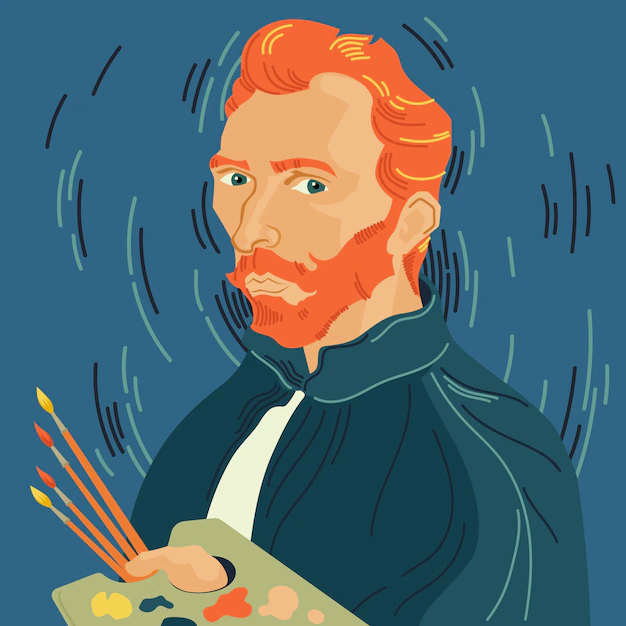Table of Contents
- Introduction
- The Meeting of Two Creative Giants
- The Relationship Between Stravinsky and Picasso
- The Collaborative Spirit of the Early 20th Century
- The Creation of The Soldier’s Tale
- The Intersection of Music and Visual Art
- The Role of Picasso’s Design
- A Fusion of Styles and Innovations
- Stravinsky’s Musical Revolution
- Picasso’s Pioneering Visual Art
- The Lasting Impact of Their Collaboration
- Influence on Future Generations
- Modern Interpretations of Their Work
- Printable Resources for Learning More
- Printable Biographies
- Artwork and Sheet Music
- Conclusion
Introduction
When two creative minds of the 20th century come together, it’s almost inevitable that something extraordinary will result. One such collaboration between two of the greatest artists of the time, Igor Stravinsky and Pablo Picasso, left a lasting legacy in both the music and visual arts worlds. These two legends—one a composer, the other a painter—each revolutionized their respective fields, but it was when their paths crossed that the world witnessed the fusion of two innovative forces.
This article explores their artistic collaboration, focusing on how Igor Stravinsky and Pablo Picasso came together to create a masterpiece that blends music and visual art. We’ll also provide printable resources for readers to learn more about their joint venture, showcasing how this collaboration resonates in contemporary discussions on art, music, and creativity.
The Meeting of Two Creative Giants
The Relationship Between Stravinsky and Picasso
Stravinsky, a Russian composer renowned for his radical approach to classical music, and Picasso, a Spanish painter and sculptor known for pioneering Cubism, were both at the forefront of modernism in the early 20th century. Their individual works broke conventions and reshaped the cultural landscape. So, when their paths finally crossed, it was only a matter of time before something monumental was created.
Their collaboration was not just based on mutual admiration; it was also a deep respect for each other’s commitment to pushing boundaries in their respective mediums. Picasso’s ability to rethink and reshape form matched Stravinsky’s fearless exploration of new sounds, making them natural partners in artistic exploration.
The Collaborative Spirit of the Early 20th Century
The early 1900s was a period of artistic revolution, with movements like Fauvism, Expressionism, and Dadaism emerging across Europe. It was a time when artists felt free to break from traditional methods and embrace bold, experimental work. Picasso and Stravinsky, each influential in his own sphere, were both leading figures of this time of creative upheaval.
Their collaboration was emblematic of the era’s spirit—one where the lines between different artistic disciplines blurred, allowing artists like Stravinsky and Picasso to explore the fusion of music and visual art.
The Creation of The Soldier’s Tale
The Intersection of Music and Visual Art
One of the most famous works born from their collaboration was The Soldier’s Tale (L’Histoire du Soldat), a theatrical production composed by Stravinsky and accompanied by a libretto by Charles-Ferdinand Ramuz. The work combined music, dance, and narration, and Picasso contributed the set and costume designs for the production.
Stravinsky’s The Soldier’s Tale tells the story of a soldier who trades his violin for a book that predicts the future, which ultimately leads to his downfall. The music was written to be performed by a small ensemble, and Picasso’s designs perfectly captured the themes of the narrative—dark, abstract, and thought-provoking.
The Role of Picasso’s Design
Picasso’s work for The Soldier’s Tale played a crucial role in bringing the story to life visually. His use of fragmented shapes and bold colors mirrored Stravinsky’s fractured, innovative musical style. The abstract nature of Picasso’s design resonated with the themes of the story, which deals with fate, temptation, and the surreal nature of the human experience. Picasso’s iconic Cubist influence is evident in the costumes and sets, reflecting the experimental and avant-garde nature of the music.
A Fusion of Styles and Innovations
Stravinsky’s Musical Revolution
Stravinsky was renowned for his ability to break from tradition and create new musical forms. The Soldier’s Tale exemplifies his style, with its rhythmic complexity and unconventional use of instruments. Unlike grand orchestral works, this piece utilized a small ensemble, demonstrating Stravinsky’s innovation in adapting music to different contexts. The score itself challenged traditional harmonies and rhythms, using simple, but striking, melodies that captured the story’s themes of conflict and despair.
Picasso’s Pioneering Visual Art
Meanwhile, Picasso was reimagining the very nature of visual art. He co-founded Cubism, a style that fragmented objects and scenes into geometric forms and multiple perspectives. His approach to The Soldier’s Tale was no different—through his abstract designs, he translated the music into visuals. His use of distorted, angular forms to depict characters and scenes from the story gave viewers a sense of unease, which mirrored the tension in Stravinsky’s score.
Their collaboration was a perfect example of how two distinct art forms could intertwine to create a singular experience, fusing visual and musical elements into a comprehensive, immersive piece of art.
The Lasting Impact of Their Collaboration
Influence on Future Generations
The partnership between Stravinsky and Picasso not only shaped their own careers but also left a lasting mark on the development of modern music and visual art. The idea of blending different artistic forms has been adopted by countless artists and performers in the years since. Modern theatre, experimental music, and even multimedia performances owe much to the groundbreaking nature of The Soldier’s Tale.
Modern Interpretations of Their Work
Today, both Stravinsky’s music and Picasso’s art are often referenced in performances and exhibitions. Contemporary artists and composers still draw on the influences of these two figures, constantly seeking to push the boundaries of their respective fields. The fusion of music and visual art, as seen in their collaboration, continues to inspire innovative works that span genres and disciplines.
Printable Resources for Learning More
For those who wish to explore the full scope of Stravinsky and Picasso’s collaboration, there are several printable resources available:
- Printable biographies of Stravinsky and Picasso, detailing their lives, influences, and major works.
- Artwork and sheet music from The Soldier’s Tale, allowing enthusiasts to dive deeper into both the visual and musical elements of the piece.
- Educational guides that help explain the significance of their work and its impact on the artistic world.
These resources provide an accessible and comprehensive way to explore this groundbreaking collaboration.
Conclusion
The collaboration between Igor Stravinsky and Pablo Picasso stands as a testament to the power of creativity and the potential for artistic fusion. By combining music and visual art in The Soldier’s Tale, these two giants of 20th-century culture not only created a unique piece of art but also laid the groundwork for future generations of artists, musicians, and performers.
For young creatives and art enthusiasts, exploring the work of Stravinsky and Picasso offers valuable lessons in innovation, collaboration, and the importance of breaking boundaries. With free printable resources available for study, it’s easier than ever to delve into the history and genius of this incredible partnership.


